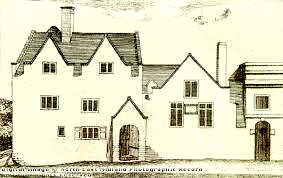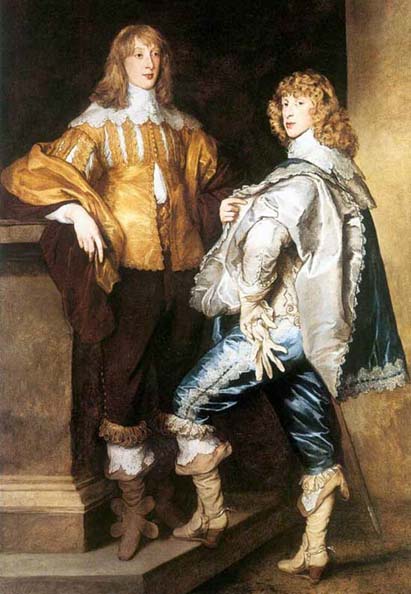In the nineteenth century and before, the Master (what would now be the Headmaster) of the Free School in Stoney Street, often acted as Chaplain to the Town Gaol which was housed in the same building as the current Galleries of Justice:

This meant that every time somebody was hanged, the Master was required to attend. In a previous article, I have already told the story of how the Reverend William Butler attended the execution of one John Fenton, a blacksmith and publican, who was hanged at the age of thirty-seven for the murder of Charles Spencer at Walkeringham on March 6th 1860.
In actual fact, William Butler was not to stay in his job as Master for very much longer. He was not a well man, having had his health weakened by a huge scandal in the town about the Sir Thomas White’s Loan Money, which had not been used properly over the previous few years. Once again, the well tried defence of “The money was just resting in my account.” was not accepted. Worse still, the Reverend’s son had died in 1858. Butler was a tired man, and was replaced by Frederick Cusins, who actually worked as temporary Acting Headmaster for an amazing seven years. This is the Free School:

On 8 o’clock on the morning of Wednesday, August 10th 1864, it was Frederick Cusins’ turn to witness a fellow human being put to death. The man who was being hanged on this particular day was Richard Thomas Parker, aged twenty-nine:

Parker was born in Thurgarton on October 26th 1834, the only son of his mother’s second marriage. Surprisingly for this era, she must have been in her mid to late forties when she gave birth to him. Parker was initially apprenticed to Mr Bee the Butcher of Sneinton Street in Nottingham. When his apprenticeship finished, he set up in business in Fiskerton where he again worked as a butcher, but not a particularly sober or upright one. He was publicly declared bankrupt in November, 1862 at Newark-on-Trent. Here is a map of the area. Look for the orange arrow:
Not helped by an entire lifetime of being thoroughly overindulged and spoilt by his parents, and in particular his mother, who had waited so long for this unexpected child, Parker was dissolute and never slow to turn to physical violence. One day in 1864 he went to a cricket match at Newark-on-Trent, and in his attempt to drink the beer tent dry, consumed, as was his wont, too much alcohol. Always quarrelsome and confrontational after even the slightest amount of drink, he then returned to the family home in Fiskerton and had a violent drunken argument with his father, Samuel Parker, who promptly left the house and set off down the road. His wife, Elizabeth, rushed out of the house to warn her husband that “Tom’s got a gun”. Firing from the window of the house, Parker shot his father, Samuel, and his mother, Elizabeth as she tried to protect her husband. One internet source said that she was “formerly Miss Tutbury”. It took me far longer than it should have done to realise that, in actual fact, this was referring to her maiden name, rather than her career in the beauty pageant business. I must confess, I did actually Google “Miss Tutbury”. I think I found “formerly Miss Tutbury and the current Miss Tutbury” or perhaps they are “Miss Tutbury and Mrs Tutbury, her Mum”:
Anyway, Samuel Parker, the father, recovered from his wounds, but his seventy-six-year old wife did not quite pull through. She lingered on for several weeks but finally died on May 16th 1864. Her favourite son finished up here, in the gaol in Nottingham:

Richard Parker’s trial duly took place at Nottingham Crown Court in the Shire Hall in Nottingham, in the building which is now the Galleries of Justice Museum. Proceedings began on Monday, July 25th 1864. The presiding judge was Mr Justice Blackburn. I couldn’t find a photograph, but here is a contemporary caricature:
Not surprisingly, Parker was found guilty by the jury. There was only one possible sentence, which was pronounced by the judge, as:
“Richard Thomas Parker you are sentenced to be taken hence to the prison in which you were last confined and from there to a place of execution where you will be hanged by the neck until dead and thereafter your body buried within the precincts of the prison and may the Lord have mercy upon your soul”.
During this part of the trial, Mr Justice Blackburn would have been wearing his black cap as the sentence pronounced was one of death:
I did not realise that this famous item of legal wear was based on court headgear from Tudor times. Likewise, I did not know that, even since the permanent abolition of the death sentence in 1969, High Court judges still carry the black cap, but only when they are required to wear their full ceremonial dress. Perhaps some judges still harbour secret hopes of “Bring back the Cap”:
Parker was executed on the steps of the Shire Hall. This was the very last public execution in Nottingham, and building the scaffold was carried out by a local architect, Richard Charles Sutton. I have been unable to ascertain if the days of clothing with the sponsors’ name had yet been thought up. I suspect not, but this would have been a splendid way to bring your architect’s business to the public, as photographs of the hanged man were known to be very popular souvenirs of events like this.
And it was a really “Good day for a Hanging”:
A crowd of more than 10,000 spectators was in attendance. Perhaps lower league football teams should examine these figures more carefully. Apparently, there was a wooden board more than four feet high to prevent the crowd from seeing the hanged man’s dead body once he had taken the fateful plunge. Again, this may well have been a sponsorship opportunity missed. As the moment drew near, Parker was praying earnestly. A white hood was put over his head and when the Chaplain finished the sentence “In the midst of life we are in death”, that was the exact moment for the bolt on the trapdoor to be drawn. Parker then suffered, as they say, “the extreme penalty of the law”:
Twenty or more years later, in 1886, in one of life’s great ironies, Mr Sutton the Architect was to stand as the Liberal candidate for the Sherwood Ward of Nottingham Town Council. And of course, he won.
Today, the executioner was Mr Thomas Askern (1816-1878) who had arrived from York. Details of the, literally, ups and downs of his career can be found on “English hangmen 1850 to 1964″ presumably one of Mastermind’s yet-to-occur specialist subjects.
After being left hanging around for an hour, Richard Thomas Parker was cut down and buried inside the gaol. This usually involved extensive use of large quantities of quicklime inside the coffin. In Lincoln Castle, the hanged man was interred with a very small gravestone which might well carry just his initials and the date. Traditionally, they would also have their feet facing in the wrong direction. Apparently in Nottingham, the bodies were buried under the flagstones of the yard behind the building. Slabs with the barest of identification details, usually just the hanged man’s initials were then placed against a side wall:

The whole brutal process was too much for temporary Acting Headmaster Mr Cusins. An old boy reminisced how, just like William Butler had done on a previous occasion, Mr Cusins, looking very pale, staggered into the classroom and said:
“Boys, I have just seen a man hanged. I cannot teach you today. You may all go home.”
It may have been the frequency of attendance at public executions by Masters of the School which led to the rather grim tradition that every time a criminal was executed outside Nottingham Gaol, only some two hundred metres or so from the Free School, the boys were all given a holiday.
The very last execution in Nottingham took place on April 10th 1928. This was in the privacy of Nottingham Prison, which, at the time, was called Bagthorpe Prison. The map shows the area now occupied by a much enlarged prison, more in keeping, perhaps, with these lawless times:
The last man to be hanged was called George Frederick Walter Hayward. He was 32 years of age and had worked as a commercial traveller. He lived at the White House, Little Hayfield, Derbyshire.
Hayward was found guilty of the murder of Mrs Amy Collinson, aged 36, the wife of Arthur Collinson, who kept the New Inn in the village. Just to be sure, Hayward battered her to a pulp and then cut her throat. He was hanged by Thomas Pierrepoint. The motive was theft and the full story is told on two pages of the website “Peakland Heritage”.


































































